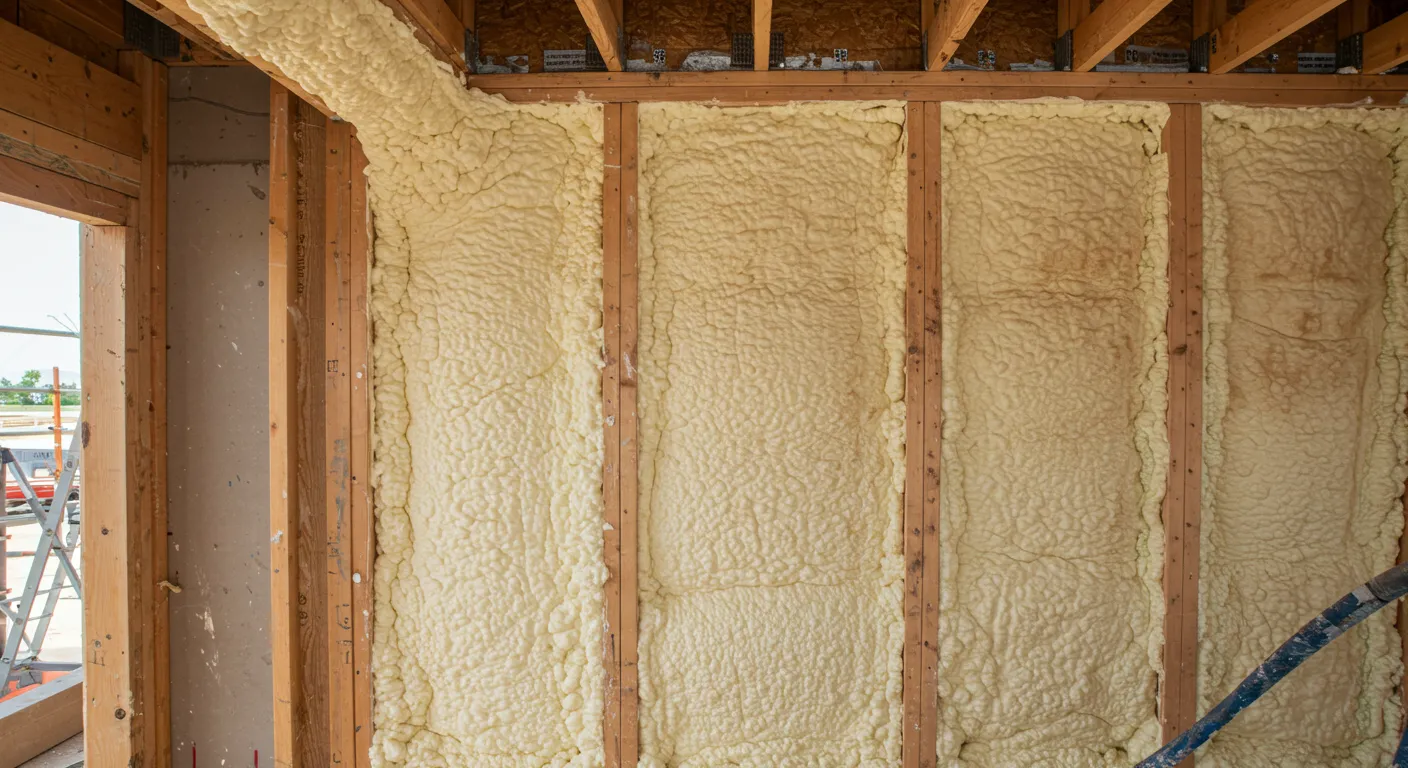
Professional spray foam installation delivers consistent results, long-term performance, and safety assurances that DIY kits cannot match. Errors in application, coverage gaps, and poor adhesion commonly occur with DIY kits. These issues reduce insulation effectiveness, increase energy costs, and often require rework.
In regions like Joplin, MO, where humidity, temperature swings, and seasonal moisture affect building materials, poorly installed spray foam can lead to mold growth, structural damage, or premature insulation failure. Professional installation ensures proper curing, ventilation, and application critical for climate-specific performance.
Ozark Eco Foam brings field-tested experience using both closed and open cell spray foam across residential, commercial, and agricultural settings. This guide compares professional vs. DIY installation using facts, field data, and region-specific considerations to inform your decision.
| Feature/Factor | Professional Installation | DIY Spray Foam Kits |
|---|---|---|
| Application Quality | Consistent, thorough coverage by trained crews | Risk of uneven application, missed spots |
| Equipment Used | Commercial-grade machines with heated hoses | Pre-pressurized cans or basic tanks |
| Insulation R-value Performance | Optimized per building code and structure type | Varies with skill level and ambient conditions |
| Safety Protocols | Proper PPE, ventilation, and fire-safe practices | Often overlooked or misused |
| Moisture and Air Sealing | Complete barrier with verified air sealing | Often partial, with sealing inconsistencies |
| Warranty and Liability | Covered by installer warranty and insurance | No warranty; user assumes all risk |
| Removal and Rework | Rarely needed due to precise execution | Often required due to improper application |
| Compliance with Codes | Meets local building and energy codes | May fail inspections or require reapplication |
| Metric | Closed Cell Spray Foam | Open Cell Spray Foam |
|---|---|---|
| R-Value per Inch | 6.0 to 7.5 | 3.5 to 4.0 |
| Expansion Rate | Low | High |
| Vapor Barrier | Yes | No |
| Application Thickness | 1 to 2 inches per pass | 3 to 4 inches per pass |
| Best Use Case | Exterior walls, roofs, crawlspaces | Interior walls, attics |

Joplin experiences humid summers and fluctuating winter temperatures. Improperly installed foam can trap moisture, leading to condensation within wall cavities. Closed cell spray foam, professionally installed, acts as both insulation and a vapor barrier, reducing moisture intrusion and maintaining air-tightness in older homes and new builds alike.
Bonus Tip: In metal buildings and pole barns, thermal bridging is a common issue. Professional installers use closed cell foam to seal structural members directly, preventing heat loss that DIY kits often miss.
Small, accessible areas might seem DIY-friendly, but ensuring full seal coverage without gaps still takes skill and equipment.
Yes. Professionals evaluate and remove outdated or damaged insulation before applying spray foam to maximize performance.
Most residential jobs complete in 1-2 days depending on size and scope.
Professionals can remove and reapply insulation, but this increases cost and complexity.
Yes. Humidity and surface temperatures impact curing and expansion, making professional control essential.
For safe, durable, and energy-efficient insulation, professional spray foam installation is the practical choice in Joplin’s climate. Avoid the risks tied to DIY kits by relying on trained crews who understand building science, code compliance, and material behavior.
Contact Ozark Eco Foam for professional guidance:
Phone: (417) 572-5893 Email: ozarkecofoam@gmail.com
Properly installed spray foam can last over 30 years with minimal maintenance.
Only if the original foam is sound. Inconsistent DIY layers often need full removal first.
Mild chemical odor that dissipates within 24 hours when properly ventilated.
Yes. Occupants should vacate the property for 12-24 hours post-installation for safety.
Yes. It adds structural rigidity, especially in wood-framed or metal buildings.